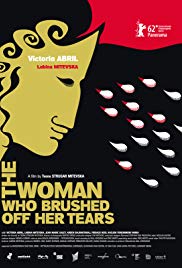When in 2009, invited by the then-new director Labina Mitevska, the cult Spanish actress Victoria Abril reinvigorated the Brothers Manaki Festival in Bitola with her lucid presence, it was to be expected that Almodovar’s former muse would become part of a project by Sisters and Brother Mitevski Production. Her acceptance of the lead role in Teona Mitevska’s new film subtly influenced the author herself, so that we see opening credits that in their sensibility very much resemble the Spanish master’s projects, and even the elements forming part of the story itself—(anti)heroines, homicide, suicide, incest, revenge—are all part of the folklore of Pedro, who has made some of the most exciting pieces of European cinema in the last two decades.
It is precisely the cinema of the old continent—if we attempt to generalise and place it all in the same folder, even though it has a whole wealth of diversity—that provoked Teona Mitevska, who obviously decided to approach the desired European standards with her third feature-length creation and make a film that resembles all that we have seen in the abovementioned Spanish, but also in the French, German, Belgian, or Austrian schools of cinema. After searching for the primal authorial scream within in her confusing debut How I Killed a Saint (Како убив светец, 2004) and the superficial touching upon certain sensitive subjects in I Am from Titov Veles (Јас сум од Титов Велес, 2007), in her third attempt Mitevska finally realises her intention successfully, making a ‘pure’ film in which a number of well-crafted solutions are executed quite well and do form part of that European tradition.

